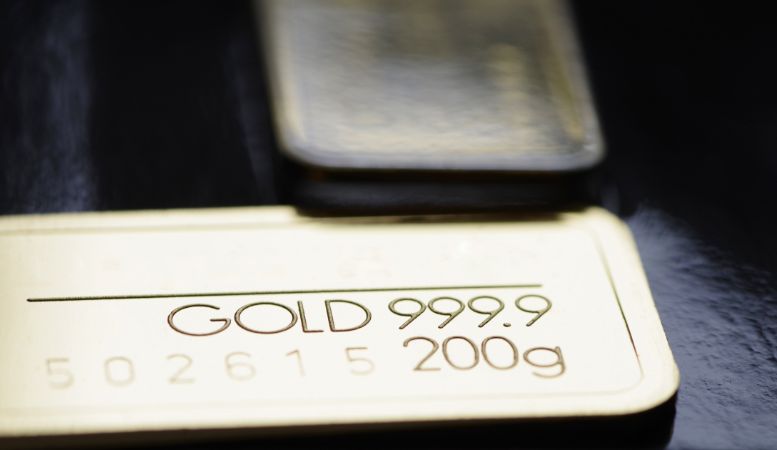Table of Contents
More and more people are investing in gold. There are numerous benefits to investing in gold and other precious metals, but as an investor, you can’t rush the process. There is plenty to consider when purchasing gold.
If you decide to buy gold in bullion bars, great! With gold bars, you’ll have access to the physical gold, feel its value, and sell it easily if the need arises. Before making your purchase, you need to know all about gold bar sizes.
This learning process can feel long and complex. Oxford Gold Group offers gold products and education tools to help you make the best decision for your investment.
Understanding the Weight of Gold Bars
![]()
Sellers categorize gold bar sizes by weight. Most people already understand that gold is heavy, especially when condensed into forms like gold bars. However, most don’t know the exact weights of gold bars.
As an investor, this is an essential part of your decision-making process, so be sure to read on if you’re new to it.
How Much Does a Gold Bar Weigh?
Gold’s heaviness comes from its high density, which is an impressive 9.32 grams per cubic centimeter. You might not immediately recognize this by holding gold jewelry or even a coin, but bars are noticeably heavier than other precious metal bars.
The standard gold bar weighs 27.4 lbs. These bars are 99.5% gold. Dealers and buyers must store them in secure vaults. While banks around the world use this standard, there are other bar sizes to consider.
Gold bars are primarily measured by weight in troy ounces and grams.
Troy Ounces and Grams
Troy ounces are a unit of measurement dating back to the Middle Ages. A troy ounce is heavier than the avoirdupois ounce, a common unit in the United States.
Smaller bars use grams as a unit of measurement. There are 31.1034768 grams in one troy ounce of gold.
The standard gold bar referenced above weighs 400 troy ounces or 12.4 kilograms. These bars measure 4 inches by 11 inches by 2 inches.
If you’re wondering about prices, the standard bar is worth approximately $700,000. Clearly, this is a large sum of money. Most investors won’t have that money to spend.
That’s why many sellers offer gold bars in various sizes. Gram gold bars are most popular for those with a specific budget or price in mind. These smaller bars are beneficial to diversify your portfolio and establish liquid assets without the risk of buying large gold bars.
Regardless of the measurement unit, gold bars come in different shapes, qualities, and brands.
Minted Gold Bars vs. Cast Gold Bars
There are two types of gold bars: minted and cast. These names refer to the method manufacturers use to make the gold bars.
The casting method (poured or molded brick) is thousands of years old. It involves melting mined gold into a liquid state, then pouring it into a mold with the desired dimensions. Once the gold cools and solidifies, it leaves the mold in blocks. From there, a manufacturer may add engravings to the brick.
Minted bars are cast bars that undergo additional processes to guarantee a special quality. After the manufacturer makes the bricks, they use a machine to compress them into a uniform length. This process keeps minted bars smoother and free from any of the marks cast bricks may have.
The precise process that minted bars go through means they may measure more accurately in weight than cast gold bars. Consider this factor when deciding what type and size of gold bar you want to purchase.
The Numbers: Gold Bar Sizes and Weights

There is a wide variety of gold bar sizes available for investors. We can break down these weights into three categories: small gold bar sizes, medium gold bar sizes, and large gold bar sizes.
When deciding between these sizes, consider their value, your budget, and your level of experience as an investor.
Small Gold Bar Sizes
Small gold bars typically come in the following weights:
- One gram
- Two grams
- Two ½ grams
- Five grams
- Ten grams
- 1/10 ounce
- ¼ ounce
- ½ ounce
Smaller gold bars are below one troy ounce and are measured primarily in grams. While the price will vary greatly depending on the weight and manufacturer of your gold bar, a five-gram bar will cost approximately $250.
This price range proves more realistic for many, especially newer investors. Some sellers will also sell small bars in bulk for discounts or deals.
If you’re satisfied with your investment in small gold bars, you can always invest in larger bars later.
Medium Gold Bar Sizes
Medium gold bars typically come in the following weights:
- 20 grams
- 50 grams
- 100 grams
- One ounce
- Two ½ ounces
- Five ounces
Medium gold bars are below 100 grams and below 10 ounces. You can still purchase a medium gold bar for less than an ounce at 20 grams if you want a good middle ground between a small and medium gold bar.
The larger the bar, the more commonly it’s used in long-term investing. The one-ounce bar, for example, is one of the most commonly traded bars.
Large Bar Sizes
Large bar sizes typically come in the following weights:
- 100 grams
- 250 grams
- 500 grams
- 1,000 grams
- 10 ounces
- 100 ounces
- 400 ounces
Large gold bars are 100 grams (or 10 ounces) and up. Large gold bars are bought and sold by experienced investors who want to secure their wealth. Converting some assets into gold bars can protect them, as gold isn’t as vulnerable to inflation as assets like cash.
Unique Cases of Gold Bullion Bar Sizes
The above are the most common sizes of gold bars, but there are always unique cases. For example, the world’s largest gold bar weighs over 8,000 oz. This bar is unavailable for trade and is on display in a museum.
On the other end of the spectrum, while a gram is the standard size for the smallest gold bar you can buy, some manufacturers will offer smaller options.
Factors To Consider When Choosing Gold Bar Sizes

Many factors go into choosing a gold bar size to buy. Not all bar sizes have equal value, ease of sale, or convenience of storage.
The premium over the spot price refers to how much the price is marked up compared to its market value. For example, if the market value for gold is $3,000 per ounce, and you purchase a one-ounce bar for $3,050, the premium would be $50.
The premium tends to be higher for smaller bars. This means the overall cost per ounce is greater than when buying larger bars. The 400-ounce and 1,000-gram bars offer the best value.
However, larger bars aren’t without their disadvantages. They are harder to divide and, therefore, harder to resell. Large bars are also more likely to be counterfeit. To avoid scams, do your due diligence by researching how to tell if gold is real.
Storing and Transporting Different Gold Bar Sizes
The size and quantity of gold bars you own will determine how you should store them. All gold bullion requires secure storage, but this need only increases with the size and value of the gold you own.
If you own a small gold bar, for example, you may feel comfortable keeping it locked in a safe in your home. This offers the advantage of having immediate access to your gold at all times.
The more gold you accumulate, the more likely it is that a bank deposit box or vault is a better option. Bank deposit boxes provide extra security against fire, damage from handling, and theft.
Secure storage is vital to preserving gold’s value and condition. Note that the more gold you need to store, the more fees you’ll need to pay.
Buying and Selling Gold Bars of Various Sizes
While gold bar sizes and prices may appear complicated at first, Oxford Gold Group wants to make your investment as simple as possible. Visit Oxford Gold Group’s product page to browse our one-ounce and 10-ounce bars available for purchase.








